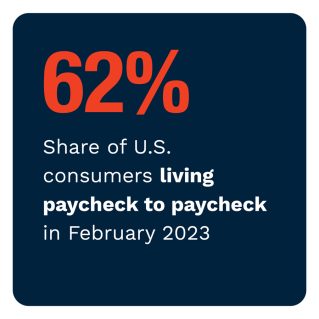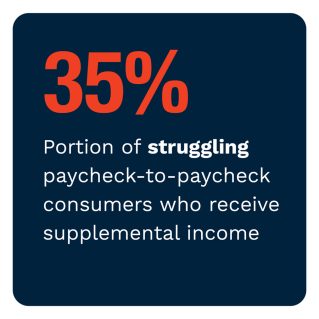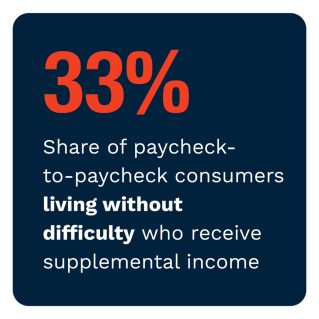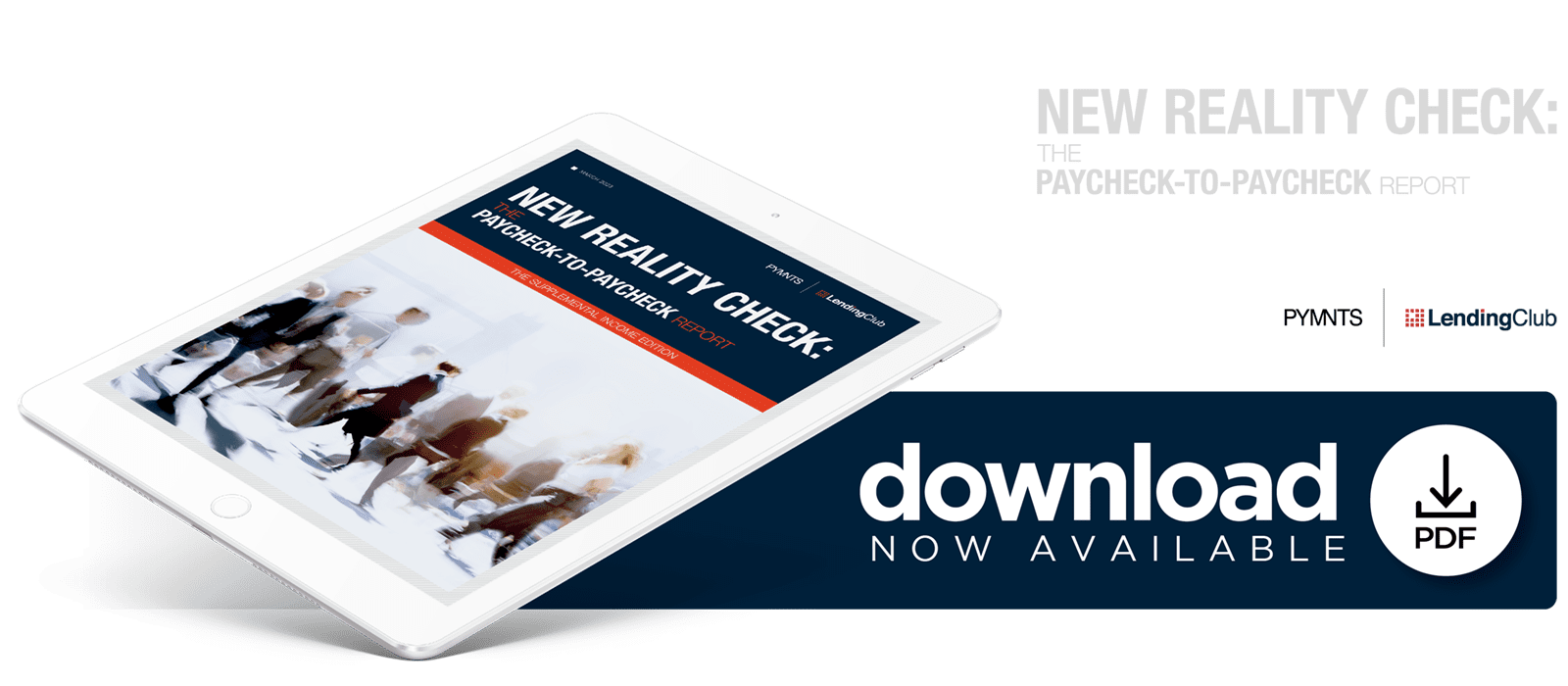Consumers Say Losing Supplemental Income Would Ruin Their Finances
PYMNTS’ research finds that 62% of United States consumers lived paycheck to paycheck in February 2023. Fewer consumers live paycheck to paycheck with issues paying their bills, at 20% — down from 21% in February 2022 and 24% in February 2021. Our data shows that supplemental income may be the key.
Nearly half of all employed consumers now have supplemental income sources. Paycheck-to-paycheck consumers report that supplemental income can represent the difference between struggling to pay bills and financial stability. Despite most of these incomes being relatively new — less than two years in most cases — 22% of paycheck-to-paycheck consumers who do not have issues paying monthly bills say their financial grounding would seriously deteriorate without this extra income.
These are just some of the findings detailed in this edition of “New Reality Check: The Paycheck-to-Paycheck Report,” a PYMNTS and LendingClub collaboration. The Supplemental Income Edition examines how U.S. consumers are turning to alternative income sources to supplement wages from their full-time employment and improve their financial standing as inflation causes overall price increases. This report draws on insights from a survey of 4,125 U.S. consumers conducted from Feb. 7 to Feb. 23, as well as an analysis of other economic data.
 More key findings from the study include the following:
More key findings from the study include the following:
• Nearly two-thirds of consumers report being employed, and close to half also have a side job or other source of supplemental income.
Inflation and price increases have led to financially trying times, and one way consumers cope is by turning to supplemental incomes, and paycheck-to-paycheck consumers are particularly likely to adapt this way. Among consumers living paycheck to paycheck, 35% of those with issues paying bills have an additional source of income, as do 33% of those living without difficulty. Just 29% of consumers overall are supplementing their incomes.
• A sizable share of consumers pursuing additional work says easiness and enjoyment are reasons to have a side job, though many still need the work to make ends meet.
Among consumers not living paycheck to paycheck who had a side job in the last six months, 70% said they opted for the side job because the income was easy to earn, and 56% said they worked a side job because they enjoyed it.  Struggling consumers also cite these reasons, but at lower rates. They are the most likely of any financial lifestyle to say their current income is insufficient to pay all their bills or that they have extraordinary expenses.
Struggling consumers also cite these reasons, but at lower rates. They are the most likely of any financial lifestyle to say their current income is insufficient to pay all their bills or that they have extraordinary expenses.
• Affluent consumers generally have a broader scope of potential sources of supplemental income.
Our research found that 23% of consumers overall had side jobs, and 17% had other supplemental income. Twenty-seven percent of consumers annually earning more than $100,000 report having side jobs, and 24% have other supplemental incomes. This group is the most likely of any income group to report having sources of active supplemental income, passive supplemental income and aid income.
To learn more about how U.S. consumers cope with ongoing inflation and price increases by working side jobs for supplemental income to increase their financial stability, download the report.


